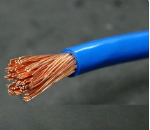
Here is a step-by-step explanation of the working principle of a single screw pump:
1. Rotor and Stator Design: The pump consists of a helical-shaped rotor (screw) and a stator (a fixed, typically elastomeric tube or cavity). The rotor has a single thread or helix, and it fits tightly inside the stator.
2. Formation of Cavities: As the rotor rotates eccentrically within the stator, the helical shape of the rotor and stator creates cavities or spaces between them. These cavities progress along the length of the screw as it rotates.
3. Fluid Entry: At the pump's inlet, the cavities are open and large, allowing the fluid to enter.
4. Fluid Displacement: As the rotor continues to rotate, the cavities move towards the pump's outlet. The reduction in cavity size due to the helical shape causes the fluid to be displaced continuously in a progressive manner.
5. Sealing Action: The helical rotor and stator design creates a tight seal between them. This seal prevents the fluid from flowing back along the rotor's axis, ensuring efficient pumping.
6. Fluid Discharge: When the cavities reach the pump's outlet, they become smaller, compressing the fluid and pushing it out of the pump.
7. Continuous Operation: The rotational movement of the rotor and the fixed stator allows for a smooth and continuous flow of fluid. The pump's output is directly proportional to the rotational speed of the rotor.
Key Features and Advantages:
- Single screw pumps can handle various types of fluids, including viscous, abrasive, and shear-sensitive materials.
- They provide a smooth and pulsation-free flow, suitable for applications where a constant flow rate is required.
- These pumps can handle fluids with suspended solids or high viscosity without losing performance.
- Single screw pumps are self-priming, meaning they can evacuate air and start pumping without the need for additional priming mechanisms.
- They are known for their reliability, efficiency, and ability to maintain a constant flow rate even at varying pressures.
Overall, the working principle of a single screw pump relies on the progressive movement of cavities created by the rotating helical rotor within the fixed stator. This design allows for precise fluid displacement and makes single screw pumps suitable for a wide range of industrial applications.





 Customer service 1
Customer service 1  Customer service 2
Customer service 2